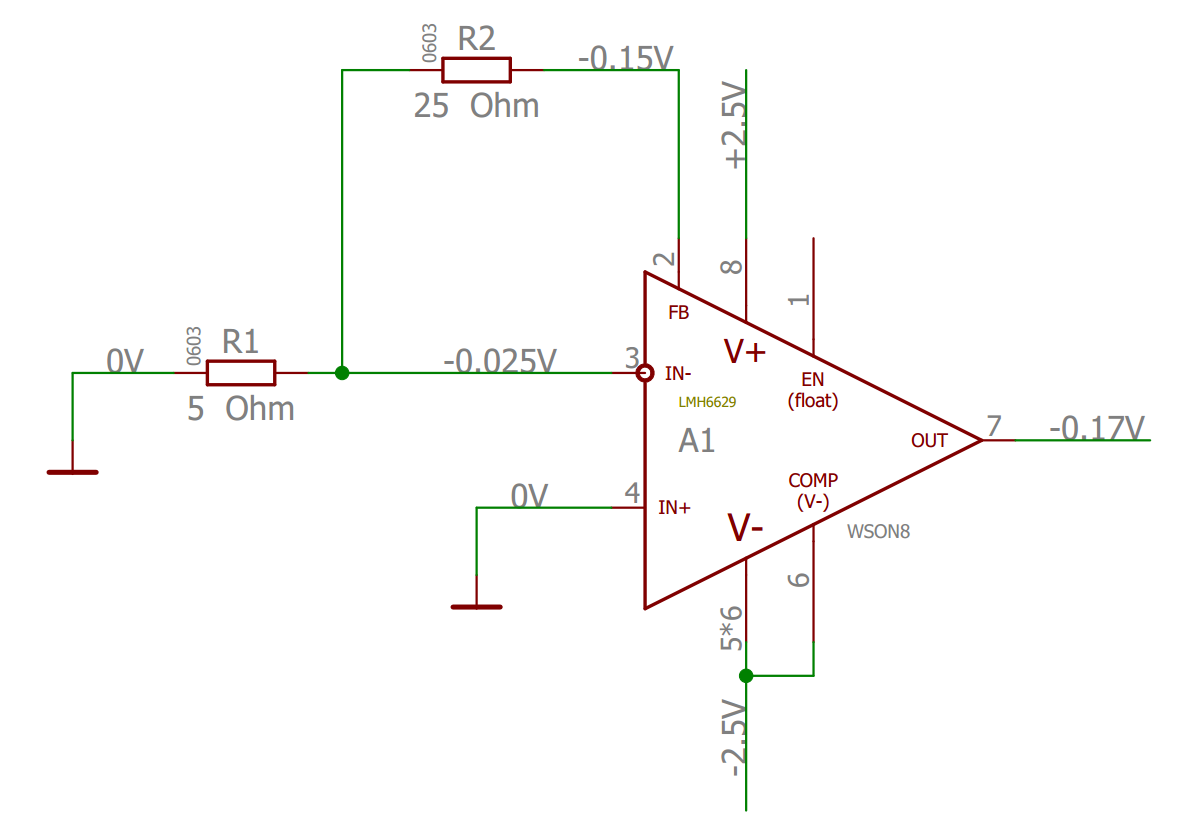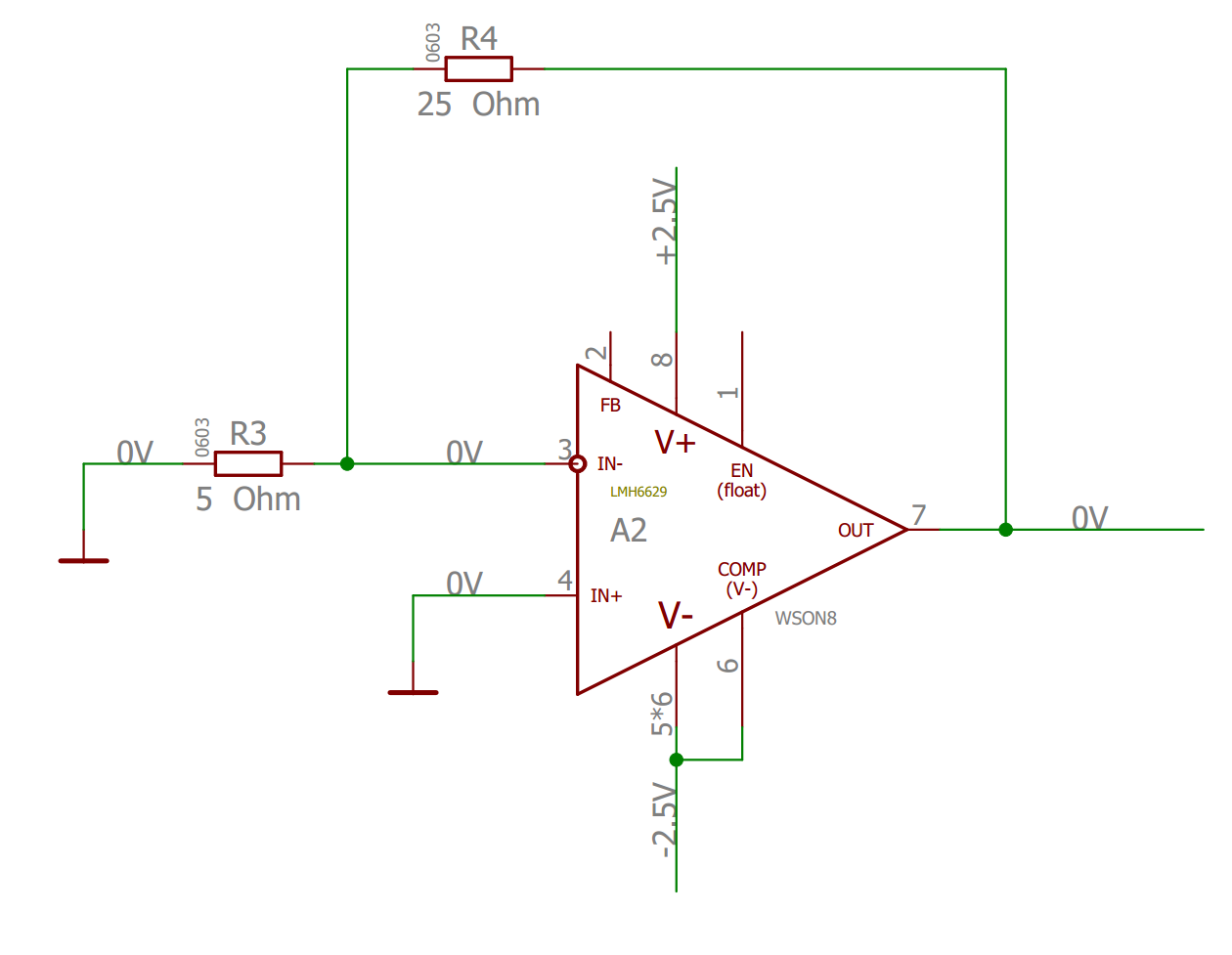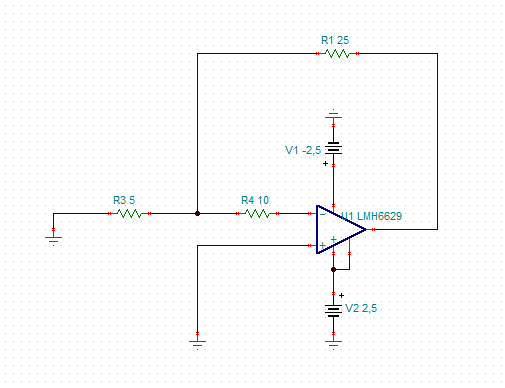Other Parts Discussed in Thread: BUF634
For some requirements reasons, we have to use very low values for the feedback and gain resistors to build a simple amplifier using LMH6629, WSON8 package.
If we are connecting a feedback resistor R2 (25 Ohms, first attached picture) to the FB(Feedback) pin 2 of the LMH6629, the input offset voltage equivalent becomes in the range of 25...100 mV, depending on the R2 value and keeps changing.
However, if we connect the same resistor to the OUT pin 7 directly, the amplifier works as expected (second attached picture).
Documentation also says that FB pin is Input/Output direction, while the OUT pin is output direction only.
Any potential issues if we will leave FB pin floating? It would be nice if we still could use FB pin instead of OUT pin to simplify PCB layout.
Thanks!




